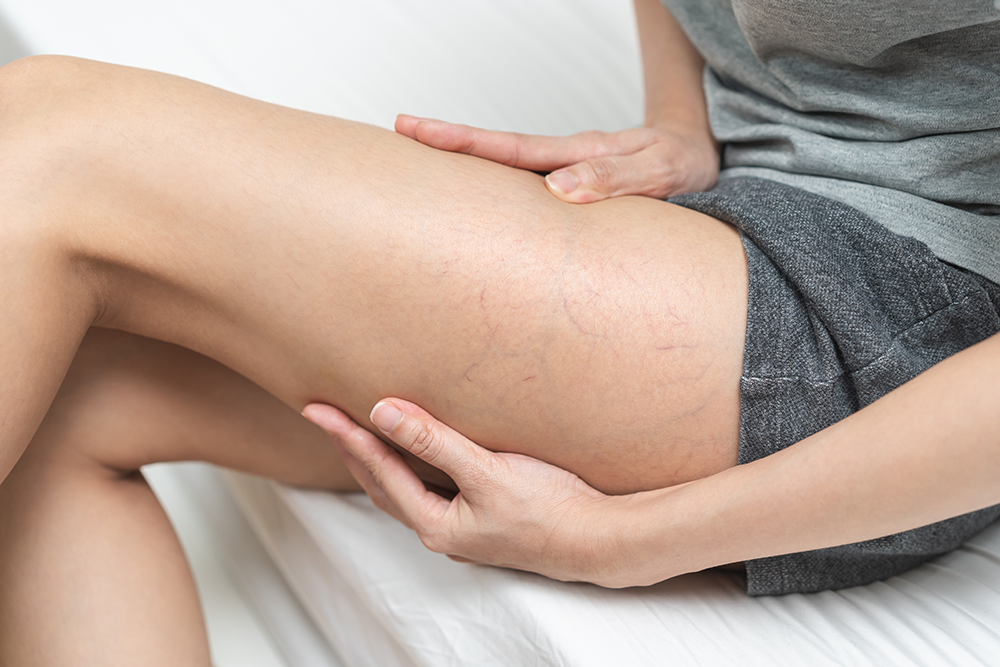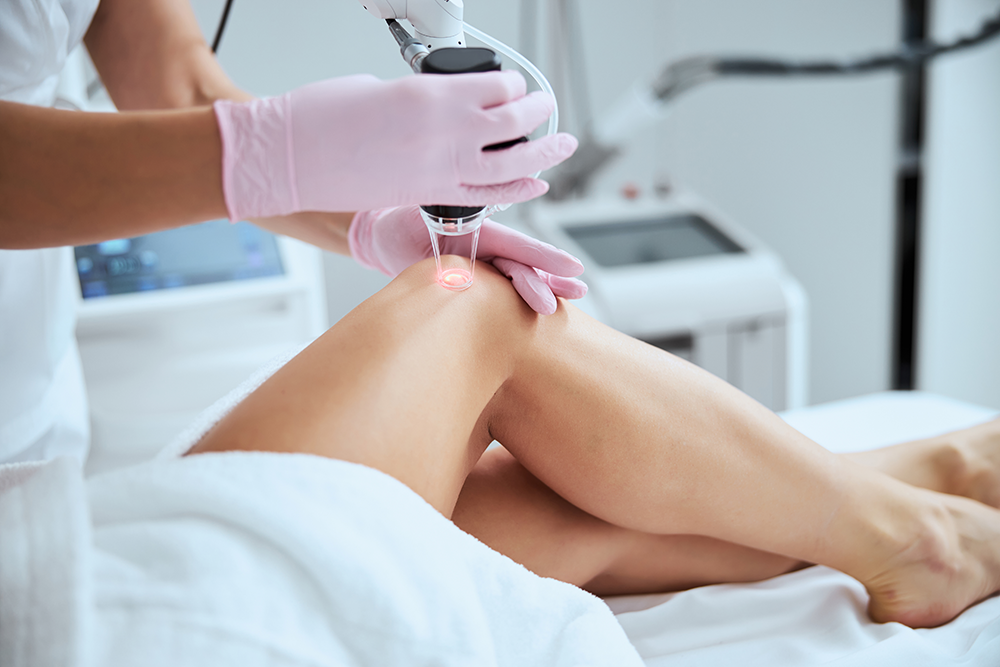
Laser Treatments for Spider Veins
Laser Treatments for Spider Veins
Zap Away Spider Veins
Certain vascular conditions go hand in hand with aging; one common side effect is spider veins.
Spider veins and varicose veins form in areas where blood flow is poor. As a result, blood gets stuck there, making the vein visible from the surface, and sometimes causing discomfort. While spider veins aren’t dangerous, you may want to treat them for cosmetic reasons, or if they become painful. Thankfully, there are ways to reduce or remove spider veins using laser vein therapies.
Laser vein treatments are noninvasive and can reduce the size and appearance of spider veins and varicose veins. Sessions are quick, and most patients will see noticeable improvements after one treatment. There is recovery time needed in between treatments.

Treatable Areas with For Spider Veins
Who is the best candiate for laser vein treatments?
Laser vein treatment may be more effective in patients with light to medium skin tones, red or purple spider veins, or mild to light spider veins.
For some patients, laser vein therapy provides a desirable alternative to other treatment options. Sclerotherapy, for instance, involves injection of medication into spider veins to help seal them. Patients may prefer laser vein therapy if they’re allergic to sclerosing agents, if they are uncomfortable with needles, or if they have spider veins on the face. While sclerotherapy is more effective in treating larger spider veins, some patients still choose the laser route.

FAQ
How does laser vein treatment work?
We use light energy to target the color of blood cells found in spider veins, breaking them down and allowing those blood vessels to be processed and reabsorbed into the body.
What is laser vein treatment used for?
It’s used to reduce the appearance of spider veins on the body and face.
How many appointments do I need?
Is laser vein treatment safe?
Laser vein therapy is noninvasive, though you may experience some redness or swelling for a day or two following treatment. You may also experience slight bruising or blistering. Patients with darker skin tones are more likely to experience complications such as scarring due to the wavelengths of light targeted by the laser.
Are laser vein treatments painful?
How long does laser vein treatment last?
Improvements can last from six months to a year. Follow-up treatments will help you maintain your results.